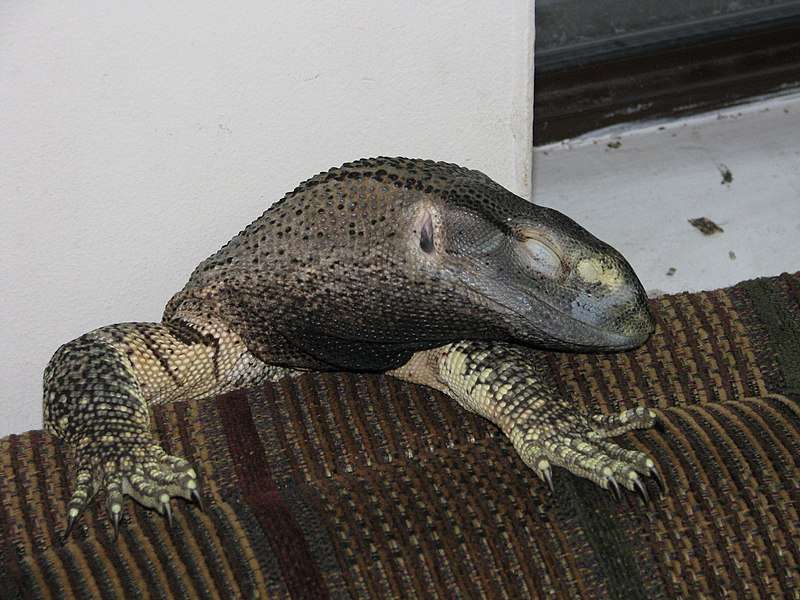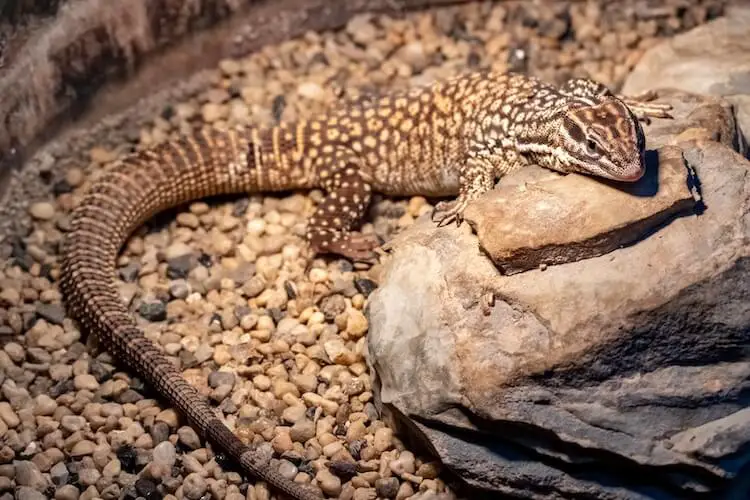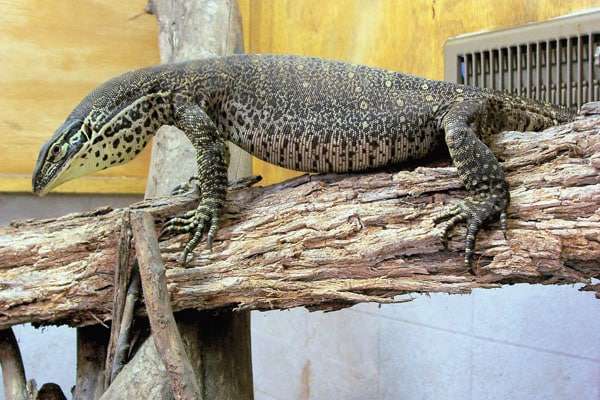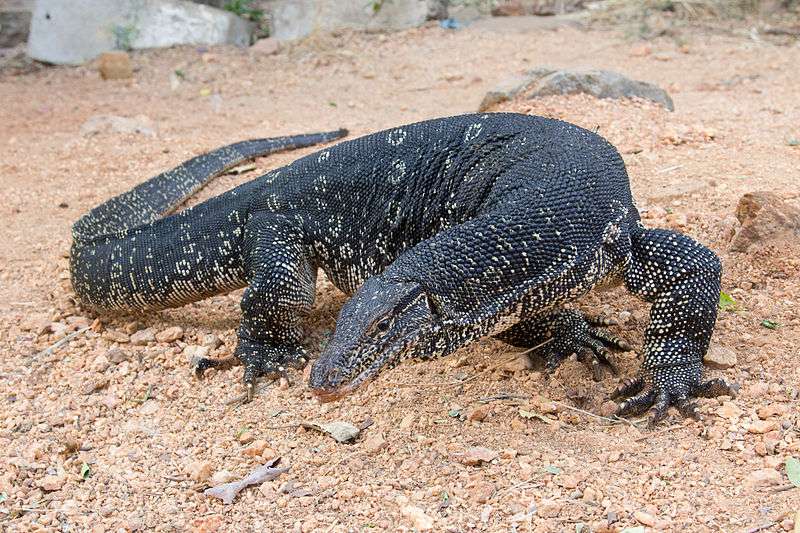
Description
Scientific Name: Varanus albigularis microstictus
Life span: Up to 25 years or more in captivity
The Black-throated Monitor is a dark gray-brown lizard with white and yellow markings on its body. These monitors may grow to be 2.1 m long including their tail. The body weight of these lizards is approximately 27 kg. These lizards are named after their throat which is black in color. They are taller than humans and extremely clever. These monitors are usually mottled brown or grey in color. Black-throated monitors have blunt and potato-shaped heads. It has a fork-shaped tongue, which can be pink-blue in color. It has been frequently observed that monitor lizards use its tongue to detect any intriguing aromas in the environment before eating them. Male black-throated monitors are larger in size as compared to their females.
Native Region/Habitat
The Black-throated Monitor is endemic to Tanzania. These monitors are terrestrial in nature. They are found in a variety of dry areas that includes: prairies, steppes, and savannahs. They are not present in desert thick scrub forests, or rainforests.

Behavior
Black-throated monitor is semi-arboreal. They spend most of their time in the trees in the wild, particularly when they are immature. Adult black-throated monitors are not very active as compared to their juveniles. They only climb branches when they feel some threat on the ground. These monitor lizards are diurnal that like spending a lot of time hiding or burrowing beneath rocks. However, they are also lively animals who require stimulation.
Care As a pet/In captivity
Black-throated monitor lizard needs a large enclosure to be kept in captivity. For a single monitor, the enclosure must be made of glass or wood 300 cm in length, 240cm in width, and 180cm in height. The enclosure has to be big enough for the monitor to move around freely and take a few steps forward and backward. These monitors require a warm, humid, and wide enclosure in captivity, as well as branches for climbing and sunbathing. These monitors love to dig, so you need a deep, roomy space with plenty of substrate for constructing borrows. They frequently dig and shift everything, therefore anything you offer in the cage needs to be fixed extremely well. It is necessary to give a little water dish to drink water, but if one is available that is large enough to allow them to soak in, they will utilize it.
Table





